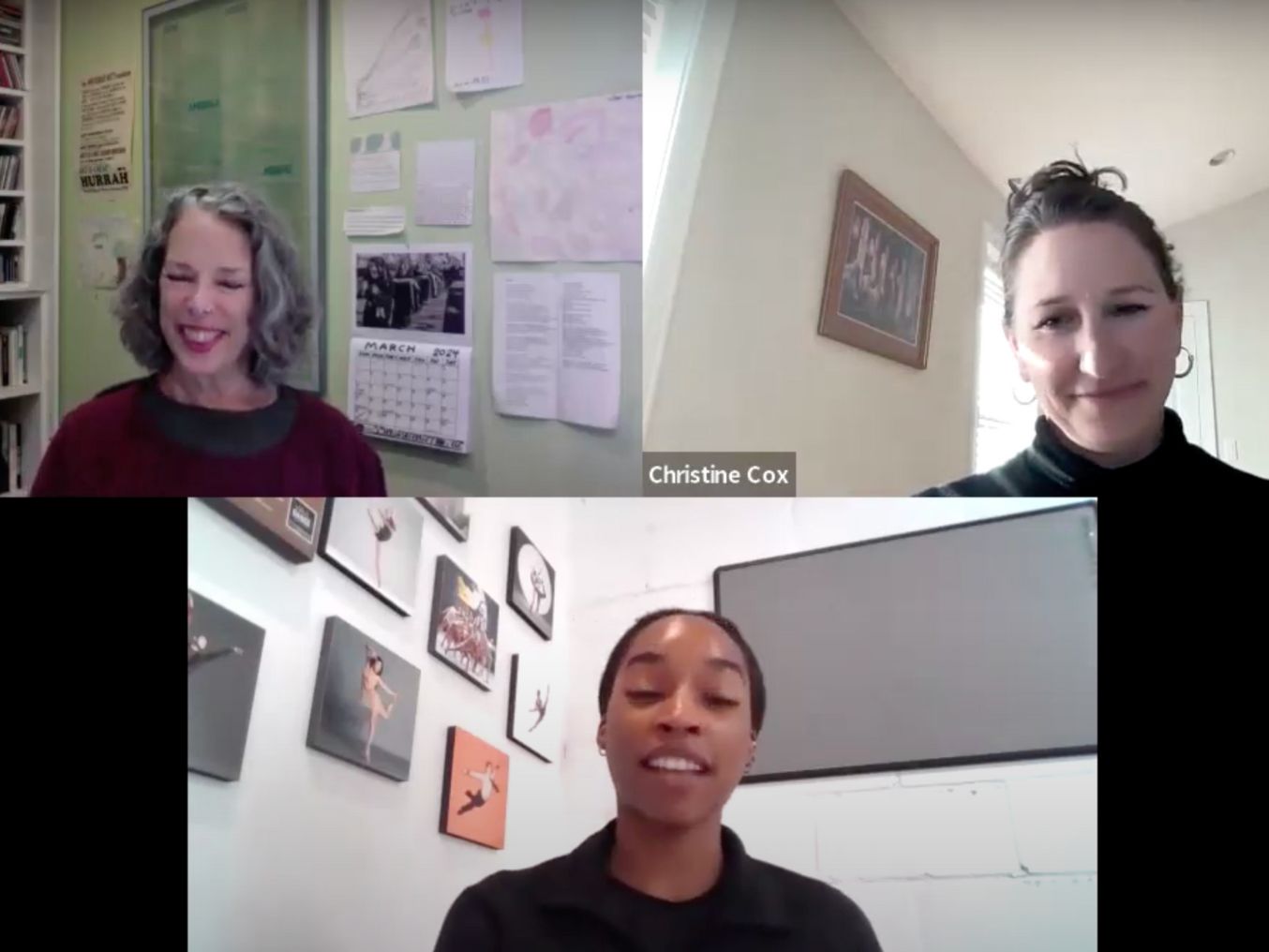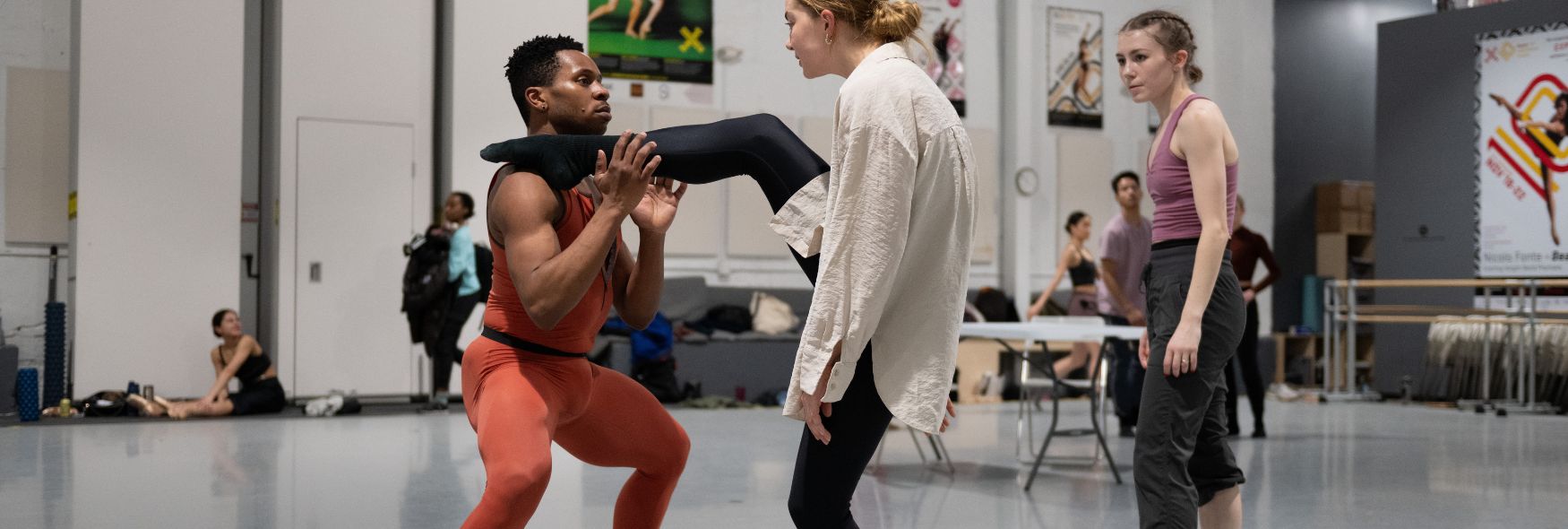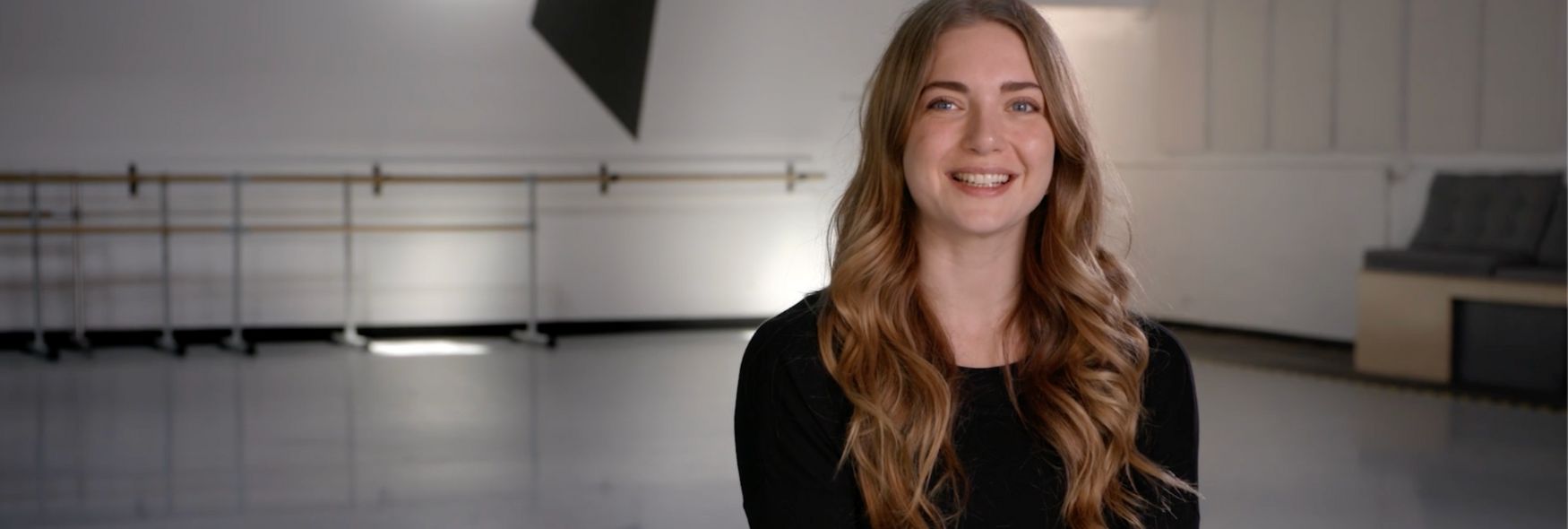Watching BalletX dancers rehearse Andrew McNicol’s Requiem for their upcoming tour at Ogden Symphony Ballet Association in Utah is an almost meditative experience. Even in silence without Mozart’s Requiem playing from the speakers, the sound of the dancers’ feet sliding across the floor and the aesthetically-soothing circular movements of McNicol’s choreography offer a sense of peace and profundity. The choreography starts languid and tranquil, with the dancers clumped on the floor as if in a collective sleep. As the music heightens, they yawn and their limbs reach in different directions, grasping at something beyond the bounds of their collective. Like the intense longing and pain that saturate Mozart’s music, the choreography encapsulates these feelings with movements that push and pull, and spiral effortless in and out of the ground.
When Andrew McNicol choreographed this piece for BalletX’s Summer Series this past summer, he described the piece as an expression of the themes most apparent in Mozart’s Requiem, namely love, life, and death. Even within a few minutes of observing their rehearsal, these themes are prevalent. As one dancer rises above the group and walks with a steady and direct purpose toward a corner of the studio, the other dancers who are still on the floor gently pull him down and absorb him back into the group. As one dancer falls, another rises and this sea of pushing and pulling bodies progresses in a diagonal across the studio.
They break apart from this slowly-enveloping mass and begin a sequence of pauses and tableaus. These moments of stillness further McNicol’s aim of ruminating on Mozart’s themes of life and death. Tableaus are snapshots, moments in time in which nothing changes, yet as the dancers signify in Requiem, this cannot be, and bodies move, change, rise and fall. At other points in the choreography, the dancers partner and support each other as one dancer suspends in an outstretched, balletic pose, before turning his or her body inward and crumbling into someone else’s arms or descending to the floor. As they move across the studio out of the tableaus, their arms sweep in broad circular motions and criss-cross in front of their bodies.
The dancers have a striking focus as they rehearse Requiem, for they seem to know that they are dancing some of the most essential themes of human existence and are aware of the weight of their artistic expression alongside one of the most famous works in classical music. Yet when the music pauses and they rehearse their slow, weighted walks, or review a partnering transition, they express another important theme of the human condition through bursts of laughter and humor: love. It’s a love for their art form, as well as an appreciation and compassion for each other, that adds an additional layer to the choreography. In the same way that they support and share weight with each other in the choreography itself, the dancers support one another throughout the learning process by communicating, sharing and encouraging. After all, when your full-time job involves meditating on and expressing some of the most significant themes of the human condition, fostering an atmosphere of serious appreciation and support comes with the territory.
-Marion Kudla, Company Intern


